UC Blogs
Washington Post reports on 2012 pest surge
This winter's eerily warm weather might soon get creepy, reported Darryl Fears in the Washington Post. The Orkin pest control company said its agents nationwide are getting a 30 percent increase in calls to treat ant infestations, compared with this time last year.
For farmers, pesticide costs might get expensive. Aphids and psyllids, also called place lice, are among the pests that plague farmers. Eric Natwick, a UC Cooperative Extension advisor in Imperial County, told the reporter that aphids are a big problem because, when feeding, they can transmit a pathogen that destroys vegetables. Natwick is an entomology expert.
Tomato psyllids — lightning fast and tremendous jumpers, for their size — are also showing up this year in California’s Imperial Valley. The psyllids tend to infest produce in California’s Coachella Valley, across a desert from the Imperial, but “when I see them here, it’s unusual,” he said.
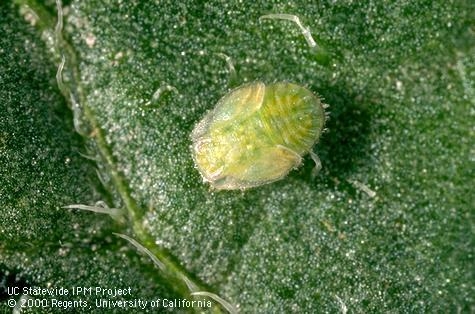
Tomato psyllid nymph showing flattened, scalelike appearance.
UCCE collaborates with California agencies to fight obesity
California Assemblyman Bill Monning attended a regional "Health from Field to the Sea" summit in Watsonville last week, where 60 people from five counties representing health agencies, hospitals and nonprofits came together to plan the battle against obesity, reported the San Jose Mercury News.
For show-and-tell, Monning brought a 50-ounce soda mug he purchased at a mini-mart in King City.
"I've seen people drinking from that size container," said Andrea Schmitt, an intern with United Way. "It's scary."
UC Cooperative Extension advisor Susan Algert, a nutrition expert, also attended the meeting.
"We need to get out of silos," she said. "We need to coordinate efforts rather than compete.
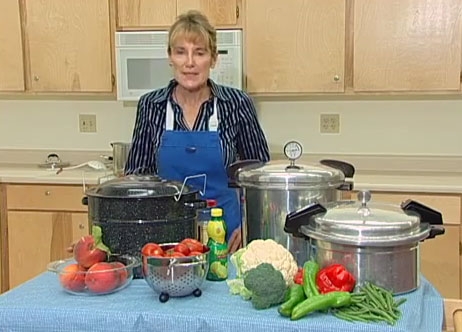
Susan Algert provides nutrition education for UC Cooperative Extension.
Invasives
I recently passed through the Russian River watershed area of Sonoma County. It’s a beautiful drive through Forestville, Guerneville, Monte Rio and Duncan’s Mills, all the way to the river’s mouth at Jenner, and then north to Gualala. But something was amiss, besides the dreadfully low water level of the river itself.
The sheer volume of invasive plants I saw all along the way startled me. It’s an eyeful, to say the least: Yellow-blooming broom, climbing ivy and periwinkle, and huge stands of arundo and acacias in the more protected areas around the river, and widespread bunches of pampasgrass thriving along the coast, fully exposed to the wind and salty air.
On the return trip, I kept an eye out for invasive plants in our area. The obvious offender: Yellow starthistle (Centaurea solstitialis), which is all over the hills of Solano County. It has been a longtime problem, especially for our local farmers and ranchers. I know there are other invaders, tucked into the nooks and crannies and creek beds. On a long ago hike at Lake Solano Park, near Winters, I came across and huge stand of spearmint. How the heck did THAT get there?
This sent me to the Internet to see what else has invaded. The answer: A bunch. See for yourself. One web site was particularly helpful, calflora.org. I highly recommend a visit there. The California Invasive Plant Council (CIPC) also maintains a very helpful web site.
So what did I come away with? Home gardeners need to be responsible for what we choose to plant. That requires some research on our part. Gardeners can unknowingly choose to plant invasives, such as Scotch broom (Cytisus scoparius), big periwinkle (Vinca major) and Algerian or English ivy, which are readily available in local nurseries. These and other plants can escape into wild, and “displace native plants and wildlife, increase wildfire and flood danger, consume valuable water, degrade recreational opportunities, and destroy productive range and timber lands,” as stated on the California Invasive Plant Council web site.
Bottom line: Plant responsibly. There is a very helpful, area-specific “Don’t Plant a Pest” program maintained by the CIPC. Check it out before you go plant shopping.
* * *
For those of us who grow tomatoes, the threat of late blight is quite real. This is especially true in the cooler, moister areas in the southern reaches of Solano County. The San Francisco Chronicle’s “Golden Gate Gardener,” Pam Peirce, is conducting research on late blight in the Bay Area, and you can get involved. Check it out.

Yellow starthistle.
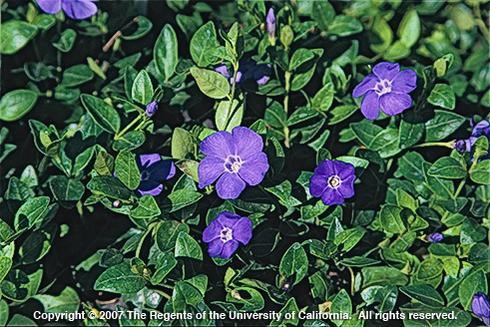
Vinca major.
Why Increasing Genetic Diversity in Honey Bees Is Crucial
Bee breeder-geneticist Susan Cobey fervently believes that increasing the overall genetic diversity of honey bees will lead to healthier, hardier...
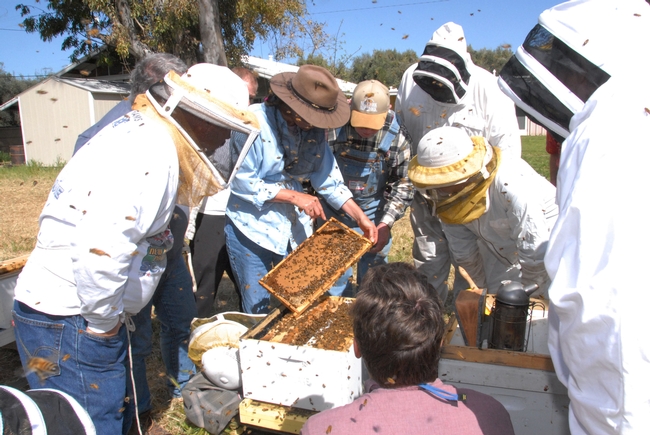
Susan Cobey teaching a queen bee rearing class at the Harry H. Laidlaw Jr. Honey Bee Research Facility, UC Davis. (Photo by Kathy Keatley Garvey)
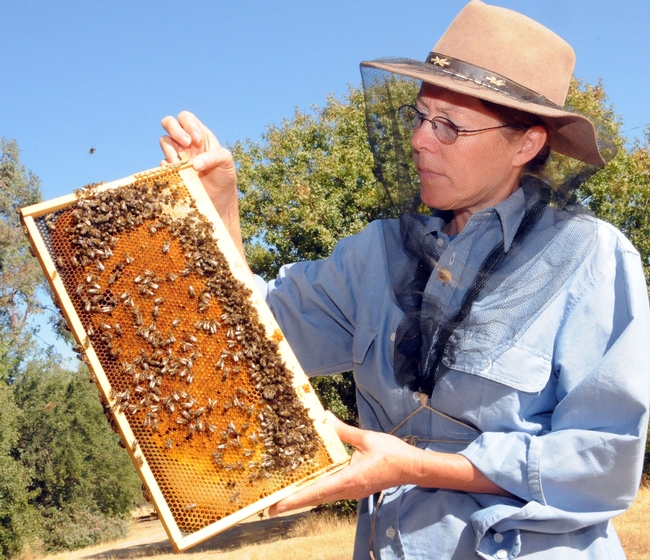
Bee breeder-geneticist Susan Cobey holding frame at the Harry H. Laidlaw Jr. Honey Bee Research Facility, UC Davis. (Photo by Kathy Keatley Garvey)
Daffodil-March Flower
There are specific flowers which are traditionally given according to the month that a person is born. The March birth flower is the Jonquil (aka Daffodil or Narcissus). Narcissus is the botanical name for all plants known by the names “daffodil,” “narcissus,” and “jonquil.” They are in the Amaryllidacea family. The scientific name of a flower species is formed by the combination of two terms: the genus name and the species descriptor in the case of the Jonquil is Narcissus jonquilla.
The best part about these early blooming bulbs is how easy they are to grow. Since they are native to southern Europe and the Mediterranean countries, they grow well in Solano County. The original daffodil is a bright or golden color and has a trumpet-like corona in the center with petals all around it. Often the trumpet is a contrasting color, and with the advent of hybrids the daffodils themselves can now range in color from white, yellow and orange to pinks and light greens.
Here are some simple guidelines for growing:
Exposure and Soil: choose a planting area that will be in full sun while the bulbs are blooming. This includes under deciduous trees that will allow for full sun. Plant the bulbs in well-draining soil.
Planting: after buying solid heavy bulbs, set them pointed end up in the ground, approximately twice as deep as they are tall. For large bulbs it is usually 5-6 inches deep and 3-5 inches deep for smaller bulbs. In our area, plant bulbs in the mid-fall, right before rains begin. It is important after blooming to let the foliage mature and turn yellow naturally. The foliage is manufacturing food for next season. Bulbs do not need watering in the summer. Also, bulbs do not need to be divided yearly. Established clumps only need dividing when flower production or bloom quality declines.
Cut Flowers: blooms are long lasting but should have a vase of their own. Freshly cut stems release a substance that causes other cut flowers to wilt.
Events: the Northern California Daffodil Society (http://www.daffodil.org) hosts several events for us to enjoy: March 10-11, the Annual Flower Power Daffodil Explosion, Point Arena, Mendocino County; and March 17-18, the Mother Lode Daffodil Show, Ironstone Vineyards, Murphys, Ca.
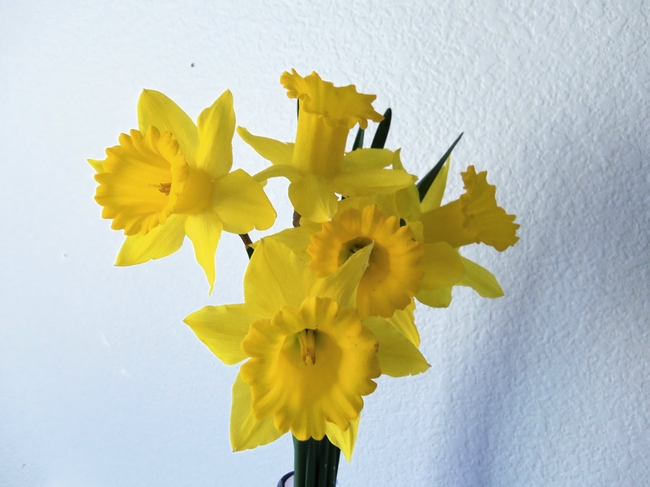
Yellow daffodil. (photo by Karen Norton)
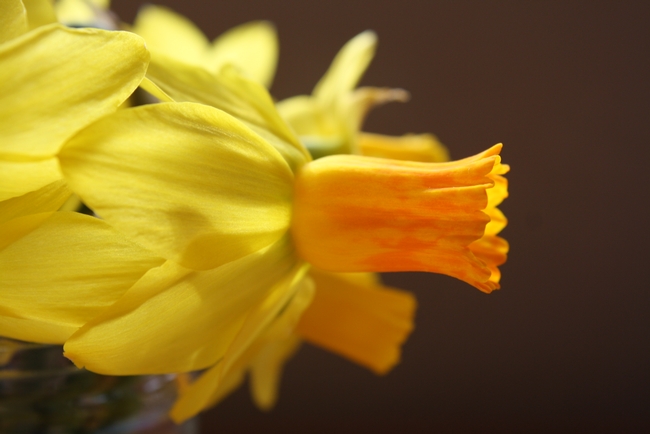
Narcissus 'Jetfire' has orange trumpet and reflexed petals. (photo by Jennifer Baumbach)

